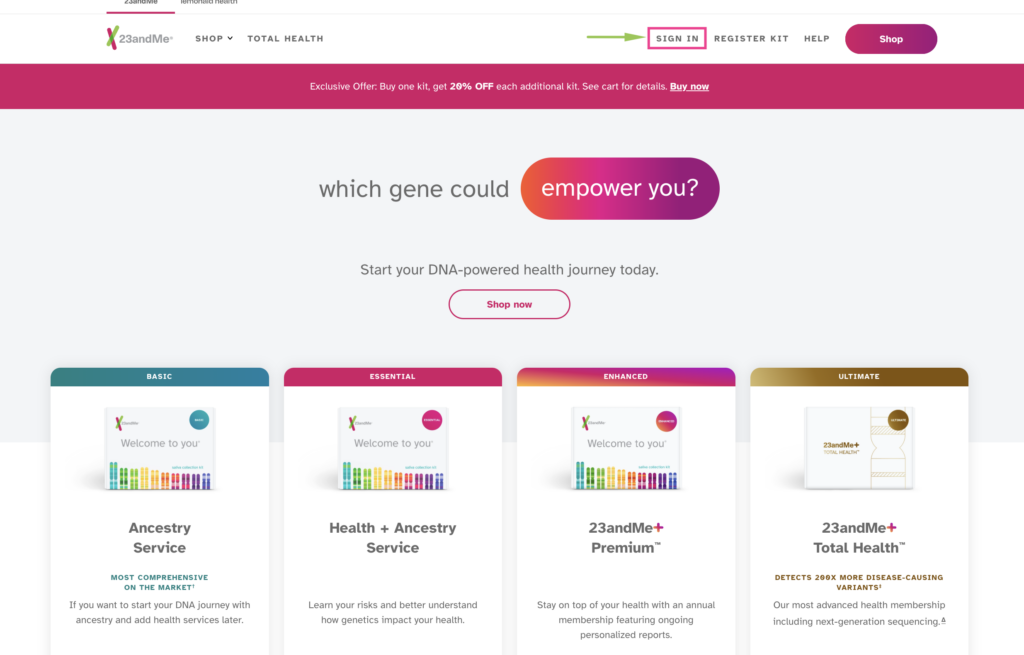Ancestry tests are all the rage these days. With a few clicks of a button and a sample of your DNA, you can find out all sorts of things about your family history. But what does it mean if you get 23andMe Native American results? For many, the results can be both exciting and daunting. The test aims to provide individuals with an understanding of their ethnicity and ancestral heritage, but it can also raise questions about what the results mean for them. To help those who have taken the test gain clarity on the results, this article will provide an overview of 23andMe's Native American-specific testing, what data points it covers, and how to interpret your own results.
About 23andMe Ancestry Report
23andMe analyzes your genes and provides information on the percentage of DNA that you have from different worldwide populations.
The ancestry composition is calculated by comparing your DNA with more than 14,000 people’s ancestries.
If a portion of your DNA resembles that of 1 of the 46 populations, that particular ancestry is assigned to the corresponding portion.
In a similar way, different ancestries are added to different portions of your DNA.
They are then computed together to calculate the overall ancestry composition.
Can 23andMe Identify Native American Ancestry?
23andMe’s ancestry service includes features that can identify genes associated with Native American ancestry.
These results, however, aren’t confirmatory in nature.
What Does It Mean To Have 23andMe Native American DNA?
Several million people have availed 23andMe’s ancestry services, and many have discovered at least a small percentage of Native American ancestry in their results.
Whether or not your results indicate Native American ancestry, it is important to understand what it means.
The 23andMe Indigenous American population includes the following genetic groups:
- Alaska
- Columbia River Basin
- Great Basin & Lower Colorado Basin
- Great Lakes and Canada
- Northeast
- Plains
- South Central
- Southwest
In the above example, the Native American ancestry is pretty high.
This means that certain sections of their DNA match a set of Indigenous American reference individuals more closely than other global reference populations.
Furthermore, people who have indigenous ancestry in North and South America have a common shared ancestry with the people of East Asia.
This is because many thousand years ago, populations migrated from Central to Southern Asia.
Descendants of these populations began to move north to populate the rest of the eastern regions of Asia and Siberia.
The test results should be taken with a pinch of salt, owing to the limitations of this technology.
Why Didn’t 23andMe Results Show Native American Ancestry?
This can happen when you inherit certain genetic markers that are not yet included in 23andMe’s Native American population reference database.
Further, certain communities of Native American ancestry are underrepresented in genetic research.
What Are Some Native American Genetic Traits?
Some common physical genetic traits associated with native American ancestry include:
- Dark hair
- Brown eyes
- High forehead and cheekbones
- Olive to copper skin tone
Got your 23andMe test done? Now, you can upload your raw DNA data to Xcode Life to learn 1000+ things about your health, including nutrition, fitness, methylation, and health risks.
What Else Does 23andMe Ancestry Report Include?
Along with the ancestry composition report, 23andMe provides various tools to dig deep into your ancestry.
Map view
Gives a quick and easy overview of your ancestry composition by highlighting the regions in the map associated with your ancestry.
Ancestry details and recent ancestor locations
Provides a microscopic view of your ancestry by narrowing down your results to city and state levels.
This section also comes with cultural, language, and other information about the reference populations.
You can also see a more recent and granular view of your ancestry in this section.
Ancestry timeline
Helps you find out how many generations ago you had a single ancestor from just one population.
Parental inheritance
Applicable only if you match with a biological parent who is also a 23andMe user.
Ancestry composition will display which portion of your ancestry was inherited from which parent.
However, this is not available for everyone.
Chromosome painting
Overview of all 23 pairs of chromosomes, highlighting where your different ancestries are located on your genome.
Can I Get Health Information from Ancestry Test Data?
With the information present in your DNA data, you can uncover insights into several aspects of your health and well-being.
- Vitamin deficiency risk
- Your ideal macro intake
- Weight loss/gain tendencies
- Eating patterns and behavior
- Ideal fitness routine
- Physical injury risk
- Skin health
- Skin disorder risk
- Allergies
- Food intolerances
- Health risks
- Sleep behavior and patterns
- Sleep disorder risk
- Breast cancer status
- MTHFR gene status
- Behavior and Personality
- Carrier status
- Drug responses
To get your 23andMe raw data, follow the instructions from this page:
How to download your 23andMe Raw Data for 1000+ Health Reports
FAQs On 23andMe Native American DNA Test
Does Native American Show Up On 23andMe?
Yes, 23andMe's ancestry test analyzes markers associated with Native American ancestry.
Can A DNA Test Tell You What Native American Tribe You Are?
While DNA tests can identify markers associated with certain ancestral populations, they may not be able to zero down on the exact tribe or clan.
Why Is Native American Not Showing Up On My Results?
- Genetic markers: Some Native American communities may be underrepresented in the database of your testing company. This means that if your ancestry is linked to these groups, it may not be detected in the analysis
- Genetic recombination: Genetic recombination occurs as DNA is shuffled between generations, which may cause you to not inherit a detectable amount of Native American DNA.
Summary: Native American DNA Test
Your ancestry test results may not be consistent with your cultural identity.
While you can celebrate the “Native American” ancestry results, claiming your identity solely based on these results is not advised.
Others Are Also Reading

How To Login To Your 23andMe Account – 2024 Updated

How Long Does 23andMe Take?

AncestryDNA vs 23andMe: Which Is Better For Raw Data Analysis?




